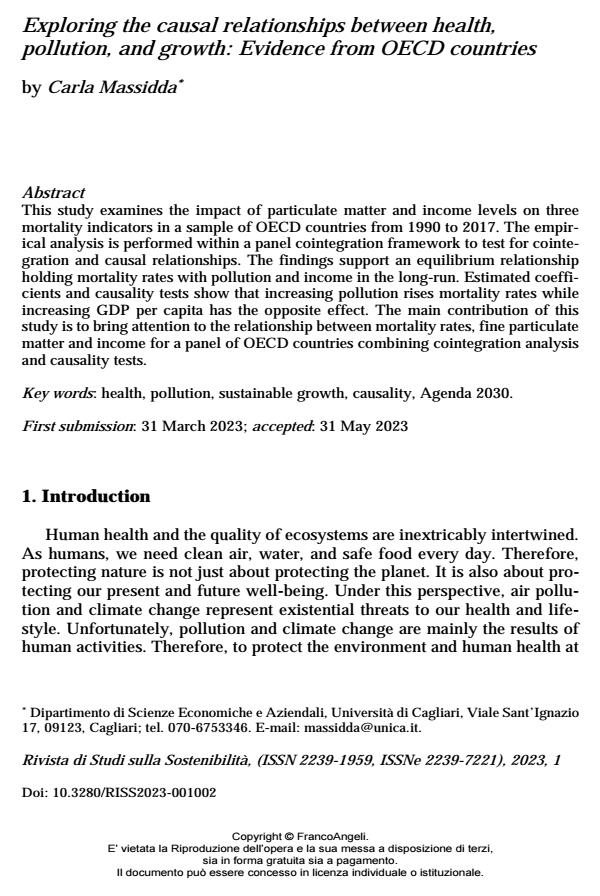Exploring the causal relationships between health, pollution, and growth: Evidence from OECD countries
Titolo Rivista RIVISTA DI STUDI SULLA SOSTENIBILITA'
Autori/Curatori Carla Massidda
Anno di pubblicazione 2023 Fascicolo 2023/1
Lingua Inglese Numero pagine 16 P. 13-28 Dimensione file 140 KB
DOI 10.3280/RISS2023-001002
Il DOI è il codice a barre della proprietà intellettuale: per saperne di più
clicca qui
Qui sotto puoi vedere in anteprima la prima pagina di questo articolo.
Se questo articolo ti interessa, lo puoi acquistare (e scaricare in formato pdf) seguendo le facili indicazioni per acquistare il download credit. Acquista Download Credits per scaricare questo Articolo in formato PDF

FrancoAngeli è membro della Publishers International Linking Association, Inc (PILA)associazione indipendente e non profit per facilitare (attraverso i servizi tecnologici implementati da CrossRef.org) l’accesso degli studiosi ai contenuti digitali nelle pubblicazioni professionali e scientifiche
This study examines the impact of particulate matter and income levels on three mortality indicators in a sample of OECD countries from 1990 to 2017. The em-pirical analysis is performed within a panel cointegration framework to test for cointegration and causal relationships. The findings support an equilibrium rela-tionship holding mortality rates with pollution and income in the long-run. Esti-mated coefficients and causality tests show that increasing pollution rises mortali-ty rates while increasing GDP per capita has the opposite effect. The main contri-bution of this study is to bring attention to the relationship between mortality rates, fine particulate matter and income for a panel of OECD countries combining coin-tegration analysis and causality tests.
Parole chiave:health, pollution, sustainable growth, causality, Agenda 2030
Carla Massidda, Exploring the causal relationships between health, pollution, and growth: Evidence from OECD countries in "RIVISTA DI STUDI SULLA SOSTENIBILITA'" 1/2023, pp 13-28, DOI: 10.3280/RISS2023-001002